Men and women in Ancient Rome were treated differently in the initial days. However, with the rise of a few bold and most powerful women, the scenario changed to almost equalizing both genders.
Initially, women of ancient Rome were the citizens of Rome but had no such rights to hold a position at a political office or even vote. Their public role was limited until the rise of a few women.
Fulvia, Agrippina the Younger, Julia Domna, Theodora, and Julia Maesa were some of the most powerful women in ancient Rome who significantly contributed to changing gender equalization.
These women became Roman Empress, Augusta and also were honored as goddesses after their death. They had a considerable role in advising, consulting, and guiding the Roman Emperors of their time.
Here is the list of the top 10 such powerful women in Ancient Rome who had a huge role in impacting women then and now.
10. Empress Theodora
Content
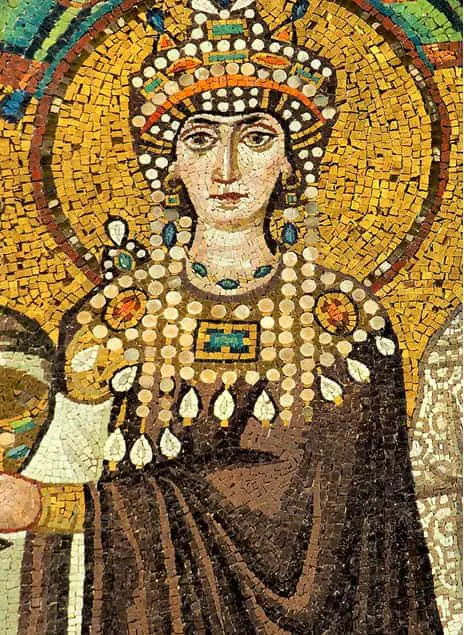
Source: Wikimedia Common
Theodora, one of the most powerful women in ancient Rome, belonged to a high society family. Her father was a bear trainer, and her mother was an actress. She married Roman Emperor Justinian I and helped him as one of the chief advisors during his reigning period.
Justinian I and Theodora ruled the Byzantine Empire during the 6th Century. The Empire was flourished with wealth, light, and growth.
Theodora was the first woman to recognize women’s rights and reformed the legal system to improve women’s rights. She promoted religious, social policies and was the saint at the Eastern Orthodox and Oriental Orthodox Church.
Similarly, she also provided political support and advice to the Ministry of Jacob Baradaeus.
Unfortunately, she died on the 28th of June, 548, due to cancer. Her body was buried at the Church of Holy Apostles, a church built by Theodora and Justinian.
9. Ulpia Severina
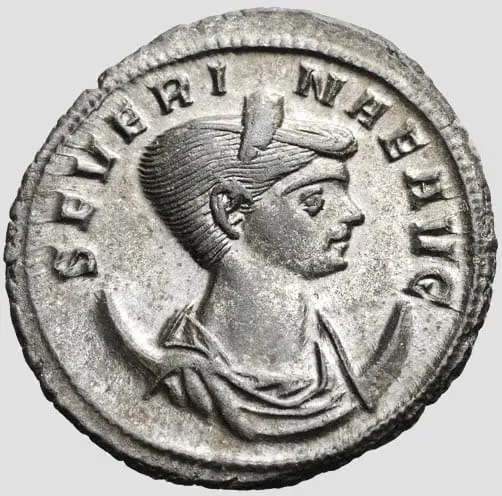
Source: Wikimedia Common
Ulpia Severina, also known as Severina, was the daughter of Ulpius Crinitus – a descendant of the line of Trajan. She was married to Emperor Aurelian and became the Roman Empress, Augusta ( 274 ), and one of the chief advisors of Emperor Aurelian.
She went to Aurelian’s campaigns and was given the mother of the barracks, country, and senate. Her decisions and advice helped Aurelian in numerous campaigns.
Severina reigned the Roman Empire after the death of her husband, Aurelian, in 275. With this, she became the only woman to rule the Roman Empire alone, on her own.
A coin with her depiction and her name, the coin of Severina, was made during her reign. One side of the coin includes information, data related to Severina and depicts her with a stern look Stephane wore on her head.
The other side depicts the harmony between the military and the imperial family.
However, she took private retirement before the reign of Marcus Claudius Tacitus in 275 and died in 290, at the age of 55.
8. Agrippina the Younger
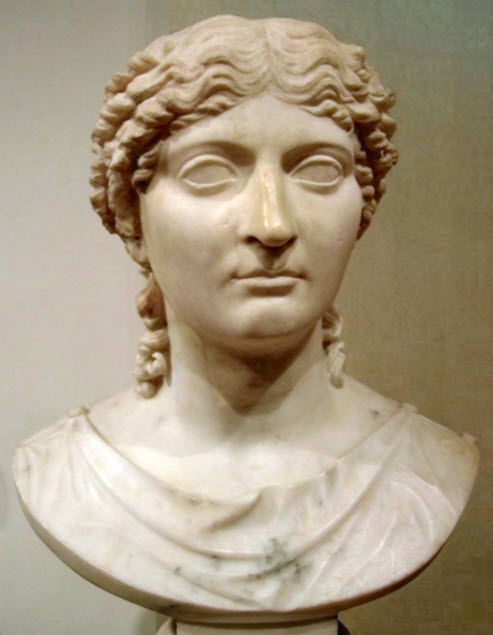
Source: Wikimedia Common
Agrippina, a member of the Julio-Claudian dynasty, was the great-granddaughter of Livia and daughter of Germanicus and Agrippina the Elder. She was married to her uncle, Emperor Claudius.
Like most other powerful Roman women, she too had a massive role in making her son, Nero, the Roman Emperor. Though Claudius had a son, Britannicus, elder to Nero, Agrippina made Nero the Emperor after the death of Claudius.
Nero was guided, advised, and consulted by Agrippina during his early years of ruling the Roman Empire. He was married to Octavia but was involved in an affair with the noblewoman Poppaea Sabina.
Agrippina was against the affair, and Nero wanted his mother not to interfere in his personal life. He planned on murdering her and became successful on the second attempt.
7. Fulvia
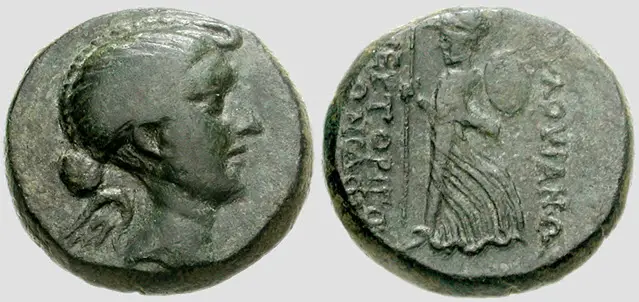
Source: Wikimedia Common
Fulvia belonged to the Fulvia gens that hailed from Tusculum. She was married to Publius Clodius Pulcher, Gaius Scriboniu Curio, and Mark Antony. However, she was known to people only after marrying Mark Antony.
She became a partner of Antony’s political career and looked after the Roman city when Antony and Octavian left Rome to assassin Caesar. Similarly, she had a considerable role in the Perusine War between 41 and 40 BC and was the first Roman woman to have her face imprinted on a coin.
Antony enacted numerous political policies under her advice. For instance, she advised him to give Sicilians Roman Citizenship and confirmed Deiotarus in his kingdom. She also helped him from the attack of Cicero and hindered Octavian’s power.
However, she was betrayed by Mark Antony and was killed during the Perusine War in 40 BC.
6. Aelia Pulcheria

Source: Wikimedia Common
Aelia Pulcheria belonged to a ruling family of the Eastern Roman empire. Her father was Flavius Arcadius, mother Eudoxia, and brother Theodosius II. She began co-ruling the Empire at 15 in 414 when her father died and left the throne to her seven-year-old brother.
She was made the Augusta, acted as her brother’s guardian, took all the necessary decisions, and vowed to remain a virgin her entire life. However, her brother could not handle the Empire, so she had to look after all the official affairs.
Her brother died on the 26th of July, 450, and she was left to rule the Empire alone for a year. On 25th November of the same year, she was forced to marry Emperor Marcian to rule the Empire.
Aelia, during her reign, had a considerable influence on the Christian Church by being involved in the Council of Ephesus and guiding the Council of Chalcedon. She was recognized as a saint by the church.
She died three years after marrying Emperor Marcian in July 453.
5. Livia Drusilla
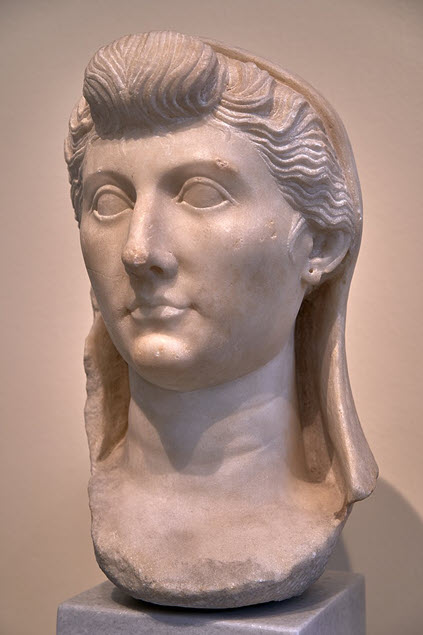
Source: Wikimedia Common
Livia Drusilla, one of the most influential Roman women, was Roman Senator Marcus Livius Drusus Claudianus and Alfidia. She was married to Tiberius Claudius Nero in 43 BC and gave birth to Emperor Tiberius.
However, their marriage did not last and she was married to Emperor Augustus in 38 BC.
She acted as one of the chief advisors of Emperor Augustus and managed the state even after the death of Augustus and during her son from Nero, Tiberius’s reign. She was famous as the shadow of a strong leader for serving silently, as the advisor and confidant of the leaders – both her husband and her son.
Emperor Augustus, in his will, had left one-third of his property to Livia and also adopted her to the Julian Dynasty with a new name and title, Julia Augusta.
She died in 29 AD and was honored as the Divine Augusta after her death. However, she was held responsible for the murder of her husband, Augustus, when alive.
4. Julia Soaemias
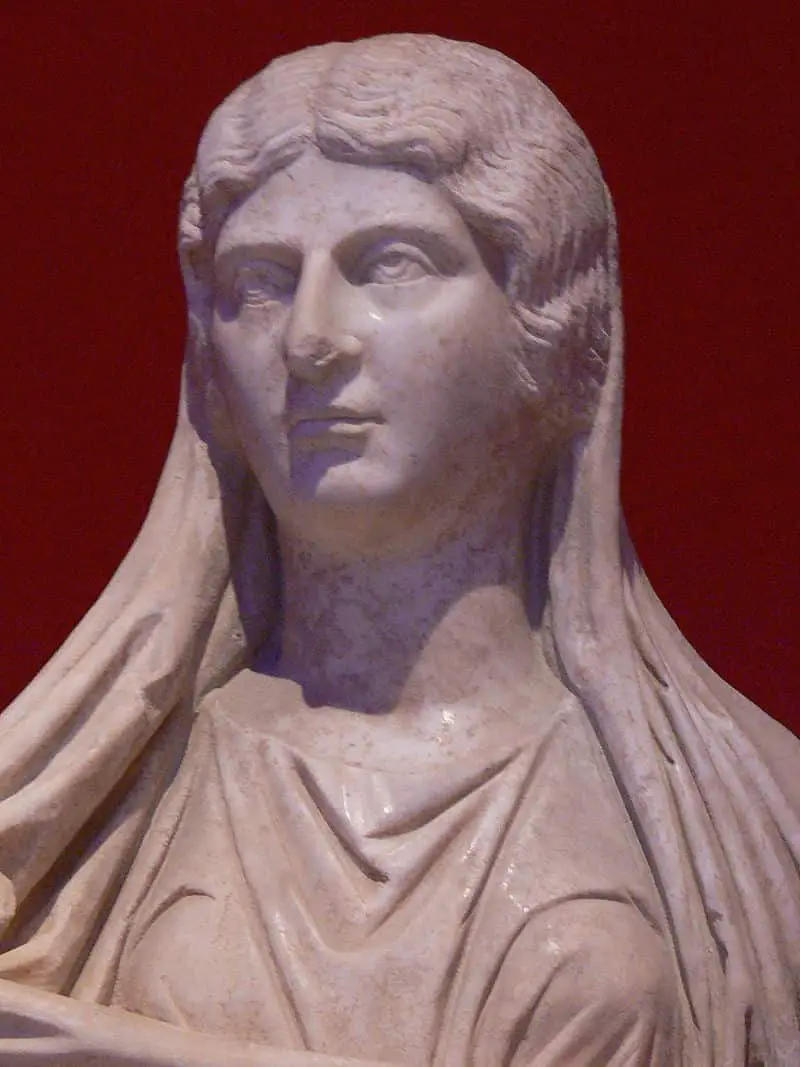
Source: Wikimedia Common
Julia Soaemias was Julia Maesa, the niece of Julia Domna and a member of the Severan Dynasty. She had a massive role in making her son, Elagabalus, the Emperor of Rome at the early age of 14.
During the reign of Caracalla, Macrinus served as his praetorian prefect and dealt with the civil affairs of Rome. He took over the throne after the death of Caracalla and his mother, Julia Domna.
With, advice and guidance of Julia Soaemias, Elagabalus battled against Macrinus at the Battle of Antioch on the 28th of June, 218, and overthrew him, becoming the Emperor.
Elagabalus was very young, so all the decisions and system was run by his mother, Julia Soemias. She was one of the chief advisors of Emperor Elagabalus and a member of the Senatorial Board.
Despite her making her son a wise and respected Emperor, he acted in the opposite direction and led to numerous inhuman acts. This resulted in riots and the murder of Elagabalus and Julia Soemias by the Praetorian guard on the 11th of March, 222.
3. Julia Mamaea
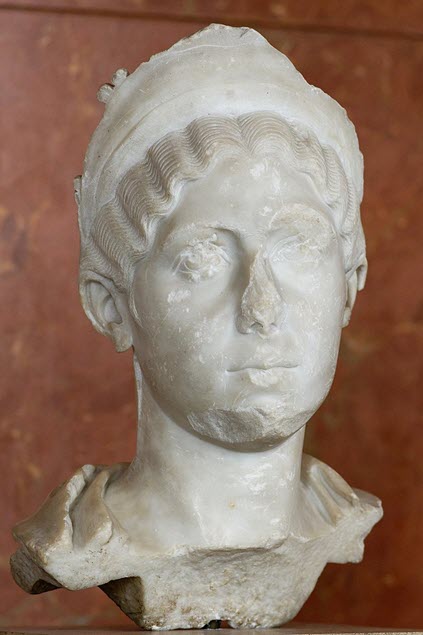
Source: Wikimedia Common
Julia Mamaea was the daughter of powerful Roman woman Julia Maesa and father Gaius Julis Avitus Alexianus. She was born in 180 AD and reigned as Roman Empress from 222 to 235 AD.
She was a Roman noblewoman, the most powerful Empress of the Severan dynasty, and the last influential woman.
She had a vital role in making her son, Alexander Severus, a Roman Emperor. Severus became the Emperor at the early age of 14.
As one of the chief advisors of Severus, Julia handled most of the official affairs and helped her son become an effective leader. The Romans honored her for her inclination towards Roman tradition, and she was the most respected traditional Roman matron.
Alexander honored her as Imperial Consort and traveled together in all their campaigns. However, one of the campaigns to the North, while rebelling against a Persian invasion, proved him a weak leader lacking military powers.
Soldiers enraged with his weakness rebelled against him and killed both mother and son in 235 AD. The Severan Dynasty also ended with their death, and Emperor Maximinus Thrax overtook the throne.
2. Julia Domna
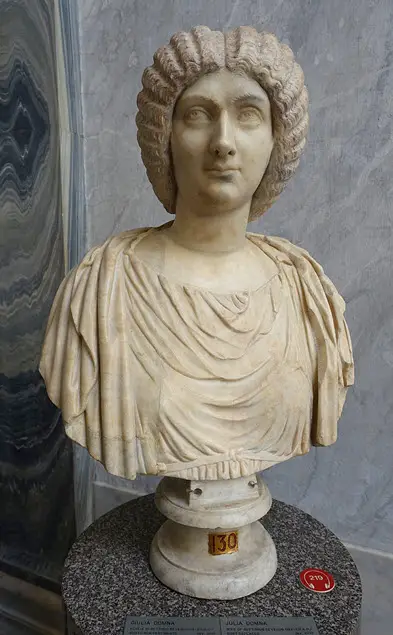
Source: Wikimedia Common
Julia Domna, born in 160 AD, was married to Roman Emperor Septimius Severus. She became the Roman Empress in 193 and remained the Empress until 211 AD.
Severus was a governor of the Roman province when he was married to Julia. She, however, helped him rise to the throne with her wisdom and proper advice.
Though she was the wife of the Roman Emperor, she gained her own identity and respect from the Romans while accompanying Severus in various campaigns. She was one of the chief advisors of Severus and had a considerable role in most of his decisions.
She also guided and assisted her husband during the year of the Five Emperors, where Commodus was murdered first on New Year’s Eve,192.
Her bold attitude and wisdom helped her gain Master Castoreum, meaning Mother of the Camp. Julia was amongst the most powerful women of Ancient Rome who inspired many more women that came in power after her.
Septimius Severus died on the 4 of February, 211 AD. However, it did not stop Julia from participating in campaigns and advising the rulers of ancient Rome. She began traveling with her sons Caracalla and Geta in their campaigns.
Apart from this, she was inclined towards philosophy and was well-known for her social, political, and philosophical influences.
Unfortunately, she committed suicide in 217 AD, after her son, Caracalla, was assassinated in one of the campaigns against Pathia.
1. Julia Maesa
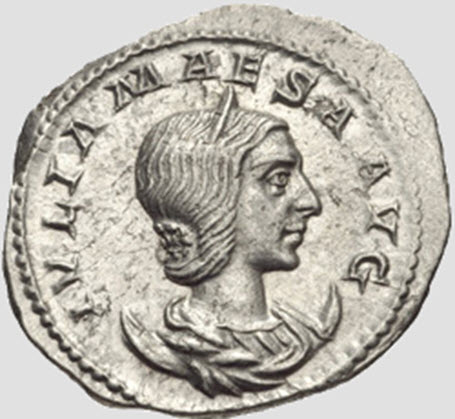
Source: Wikimedia Common
Julia Maesa, born in c.160 in Syria, belonged to Severan and Emesene dynasties. She was married to Julius Avitus Alesianus and mother of two powerful Roman women, Julia Mamaea and Julia Soaemias.
She had a massive role in making her grandchild, Elagabalus, the Roman Emperor. However, Elagabalus could not rule the Empire despite her help. She then planned on replacing him with her other grandson, Alexander, the son of Julia Mamaea.
Maesa convinced Elagabalus to adopt Alexander and placed him on the throne. Alexander was pleased with Maesa’s decision and made her the Roman goddess after her death.
Similarly, she had an influential role in the government of the Roman Empire as the first woman to be able to make both her grandsons emperors of Rome at the early age of 14.
Conclusion
Ancient Rome, Roman Emperors, and Roman Empress have always impacted people of other empires and the world. The bold attitude, wisdom, and fight for right inspire people to move towards a similar path.
The women mentioned above also inspire and influence both men and women of all time. Their acts made Romans boast about their development and evolvement.
